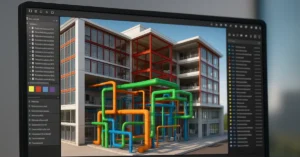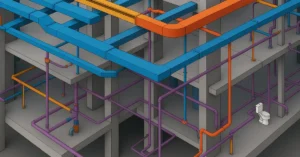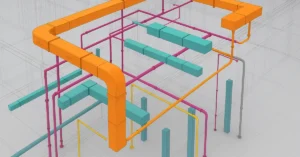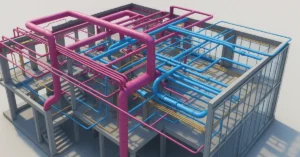Explore Brutalist buildings in Geneva
Geneva, a city best known for its lakeside charm, diplomatic gravitas, and elegant historic architecture, harbors a more austere architectural narrative that few take the time to notice: brutalism. Often misunderstood, brutalist buildings in Geneva offer a stark counterpoint to the city’s polished image. Conceived in the mid-20th century, these structures reveal an era when architects prioritized function, social utility, and unadorned honesty in design.
In this blog, we uncover the most underrated brutalist buildings in Geneva and delve into the style’s impact on the city’s architectural identity. From government buildings and universities to housing blocks and cultural centers, Geneva’s brutalism reflects not only material resilience but also a powerful social and political vision.
What is Brutalism and Why It Matters in Geneva
Brutalism, derived from the French term “béton brut” (raw concrete), rose to prominence in the post-World War II era. Known for its bold geometry, exposed concrete, and no-nonsense form, brutalism challenged traditional architectural norms.
In Geneva, brutalism served as a response to urban housing shortages, bureaucratic expansion, and the need for public institutions in a growing city. Though Switzerland is not commonly associated with raw concrete structures, Geneva embraced brutalism in moderation, blending it with the country’s penchant for clean lines and structural precision.
Top Brutalist Buildings in Geneva
1. Uni Mail (University of Geneva Mail Building)
Location: Boulevard du Pont-d’Arve
Architect: GMAA – Groupement Mandataire Architectes Associés
Year: 1997
Although relatively late in the brutalist timeline, Uni Mail’s monolithic scale and exposed structural elements embody brutalist influences. With its massive concrete interiors, expansive staircases, and grid-like facade, this building houses various faculties and has become a central academic hub in the city.
2. Fondation Louis Jeantet Building
Location: Route de Florissant
Architect: Unknown (Late 1970s)
This foundation building, home to a biomedical research institute and prestigious Louis-Jeantet Prize, is a textbook example of form following function. The concrete exterior is marked by cantilevered balconies, deep-set windows, and harsh symmetry.
3. Maison de la Paix (Older Campus, Pre-Glass Towers)
Location: Avenue de France
Architect: UN Institutions (Mid-1970s design)
Before the ultra-modern towers of the current Maison de la Paix, the site was home to administrative structures with unmistakably brutalist sensibilities—low-slung, geometric, and built in stark concrete. While many of these buildings have since been replaced or renovated, remnants remain within the complex.
4. Îlot 13 Residential Complex
Location: Rue de Lyon
Architect: Georges Addor and Jean-Marc Lamunière
Year: 1966–1968
Îlot 13 is a major brutalist residential block that reflects postwar efforts to modernize Geneva’s housing. Strong lines, modular designs, and exposed concrete dominate the structure. It introduced new urban planning concepts and was controversial for its time.
5. Bâtiment des Forces Motrices (BFM)
Location: Place des Volontaires
Architectural Transformation: Mid-century modernization of historic industrial site
Originally built in the 1800s, BFM was transformed into a cultural venue with brutalist touches during the 1960s–70s. Its heavy structural frame and stark interior contrasts with Geneva’s older buildings, marrying industrial heritage with modern minimalism.
6. Les Avanchets Housing Estate
Location: Vernier Commune, Geneva Suburb
Architect: Unknown Collective Architects
Year: 1970s
A sprawling residential area filled with concrete blocks, Les Avanchets mirrors brutalist housing projects across Europe. Its raw facades, integrated green spaces, and open pedestrian pathways were part of a socialist-inspired planning effort.
7. Tour de Carouge (Carouge Tower)
Location: Carouge District
Architect: Office of Public Works
Year: Early 1970s
This tall, concrete residential tower stands in contrast to the historic Mediterranean charm of Carouge. Its presence is unapologetically brutalist, offering pragmatic urban density with no ornamental concessions.
8. Eaux-Vives Post Office Building
Location: Rue de Montchoisy
Architect: Postal Infrastructure Group
Year: Late 1960s
This administrative building is easy to overlook but exemplifies Geneva’s understated brutalism. The rigid facade, functional window placements, and lack of ornamentation make it a quiet symbol of the movement.
Why These Buildings Matter Today
Geneva’s brutalist buildings are often overshadowed by the city’s historic churches, palatial embassies, and elegant lakefront mansions. Yet they serve crucial functions and represent a period of transition and growth.
These structures were built to house students, government workers, and families—people at the heart of Geneva’s modern success. They reflect a time when architecture was designed not just for beauty, but for resilience, inclusivity, and accessibility.
Brutalism and the Swiss Identity
Swiss architecture is usually associated with clean, minimal, and refined design. Brutalism, with its coarse materiality and imposing bulk, might seem out of place. Yet Swiss brutalism, especially in Geneva, maintains a degree of elegance that distinguishes it from its global counterparts.
You’ll find tidy joints, deliberate geometries, and functional harmonies in Geneva’s brutalist landscape. These structures may be heavy, but they are not chaotic—they are the product of precise engineering, often cloaked in a socialist-modernist ethos.
Preservation vs. Progress
As Geneva continues to expand and modernize, many of its brutalist landmarks face threats of demolition or radical renovation. While some celebrate this as progress, others argue that it erases valuable architectural history.
Uni Mail, for example, has aged well and remains central to Geneva’s academic landscape. Other buildings, however, suffer from poor maintenance and growing public indifference. Urban planners, architects, and citizens are now debating how to protect these structures while adapting them for contemporary use.
Brutalist Tourism in Geneva
Though not traditionally part of tourism brochures, Geneva’s brutalist sites are attracting attention from design aficionados and students of architecture. Walking tours and Instagram posts highlight the city’s lesser-known concrete marvels.
From University campuses to urban housing blocks, these buildings offer a compelling lens through which to understand Geneva’s socio-political shifts. They tell stories of ambition, necessity, and resilience—stories often hidden beneath grey facades.
How to Appreciate Brutalism in Geneva
Appreciating brutalist architecture requires a shift in perspective. Look beyond surface aesthetics and consider the context: postwar needs, societal transformation, and material honesty. Examine the spatial flow, the relationship between function and form, and the human activity these buildings accommodate.
Photography also plays a crucial role. Geneva’s brutalist buildings often reveal their strongest visual impact in stark light, shadow, and angles. Close-ups of material textures, repetitive patterns, and structural drama can make even skeptics pause in appreciation.
The Road Ahead
Geneva’s brutalist heritage is too valuable to be dismissed as outdated or ugly. It deserves thoughtful engagement, public discussion, and creative reuse. Adaptive projects can preserve these buildings’ integrity while infusing them with new life.
Architecture students, historians, and artists are beginning to document Geneva’s brutalism more rigorously. Exhibitions, podcasts, and academic projects are slowly reframing these structures not as eyesores, but as cultural landmarks.
Conclusion
Brutalist buildings in Geneva reveal an unexpected dimension of the city’s character. They are the anchors of a postwar identity—firm, functional, and quietly radical. In a world increasingly obsessed with polish and uniformity, these buildings offer a reminder of when architecture dared to be bold and sincere.
Whether admired or criticized, Geneva’s brutalist legacy deserves to be seen, studied, and preserved. For those willing to look beyond the concrete, there is meaning, history, and even beauty waiting to be uncovered.
If you’re interested in learning more about architecture firms in Europe, check out this comprehensive list of the top 50 firms compiled by Archgyan. From innovative startups to long-established industry leaders, this list has it all. Take a look and discover some of the most inspiring and influential architecture firms in Europe today.
If you’re interested in architecture and want to learn more about this amazing field, subscribe to our podcast on youtube
For more SketchUp tutorials, head to https://www.sketchupguru.com










